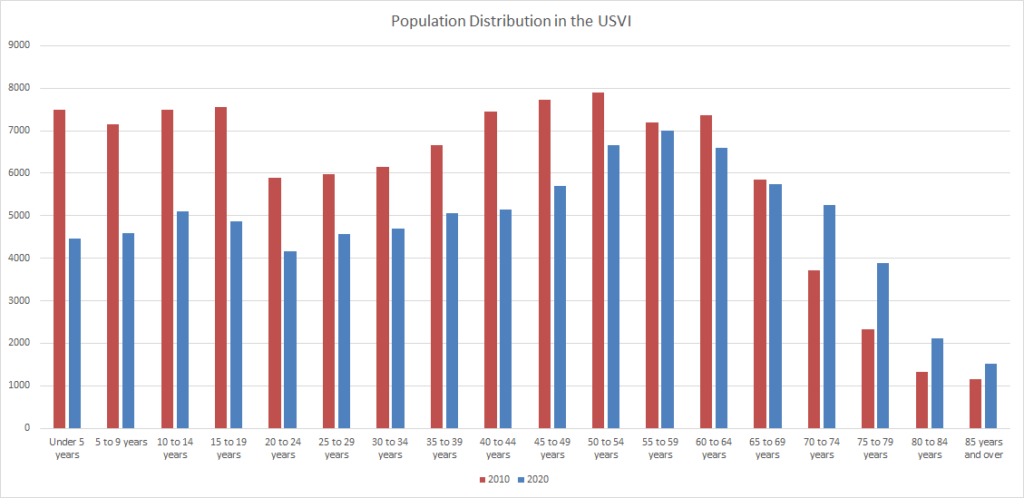
“The Youth Elderly are our Future.”
Demographic figures released last week from U.S. Census 2020 show the graying of the Virgin Islands population has not only continued in the past decade but has sped up markedly.
Twenty years ago, as recorded in the census of 2000, just 8.4 percent of the total V.I. population was 65 years or older. By 2010, that percentage had risen to 13.5 percent. In 2020, there was a giant leap to 21.3 percent.
That means more than one-fifth of the territory’s population is composed of seniors. And that worries some people.
There may be many reasons for the phenomenon, including that, due to medical advances, people, in general, are living longer than in past decades.
Adjustments to the national Social Security program illustrate a recognition of the trend by government officials. When Social Security was created in 1935, the official retirement age was 65. As health care improved and life expectancy lengthened, Congress gradually raised the age. Now, for those born in 1960 or later, 67 is the magic number for collecting full Social Security benefits.
Meanwhile, birth rates have been declining globally for many years, adding to the imbalance — or the new relationship — between youth and the elderly.
But there may be another factor at work in the territory.
If the 18 percent drop in population between the 2010 and the 2020 census surveys (from 106,405 to 87,146) was caused in great part by a mini-exodus of residents following the closure of the Hess Oil refinery in 2012 and the devastation of hurricanes Irma and Maria in 2017, just who left?
Mostly, younger people. That’s the suggestion of University of the Virgin Islands Professor Gregory Guannel, who has been poring over the Census tables and considering information from other sources.
More data, such as live birth statistics, are needed to draw definitive conclusions, Guannel said, but whatever the cause, the effect is troubling to him.
“They will need care,” he said of the increasing number of elderly residents, and the territory does not have an abundance of senior care facilities.
“It can be a workforce issue,” too, he said. Despite the fact that many seniors continue to work longer than they did in the past, there still may not be enough workers to fill all the existing jobs. And there may be more jobs to fill since people will be needed to take care of their elders. Besides, as the territory continues and rachets up building as part of hurricane recovery efforts, young people are needed more and more for construction jobs.
Then there’s the economic fall-out, Guannel said. Fewer workers mean a decline in the local government’s tax base.
On a more personal level for Guannel and the university, a decline in youth could mean a decline in college enrollment and the need to step up recruitment efforts outside the territory.
That’s the kind of thinking he believes policy makers should be doing now: studying all the possible implications of a generational shift and figuring out the necessary adjustments to accommodate the change.
Staff at UVI’s Eastern Caribbean Center, the local entity that partners with the U.S. Census Bureau to conduct the decennial census, agree the survey data can be a guide for future development across many areas, including generational challenges.
Interim Director Marissa Johnson Rogers said the demographic information that came out last week covers such diverse areas as housing, education and income.
“There’s a wealth of information for policy makers, grant writers” and community and government leaders, she said.
The center plans to convene a meeting of the local government Census Interagency Committee, possibly next week, she added, to begin discussions for improving the 2030 survey. The Census Bureau has asked for a report by Nov. 15, focusing on suggestions for improving the outreach to minority and underserved members of the community which, the bureau says, are often undercounted in many jurisdictions.